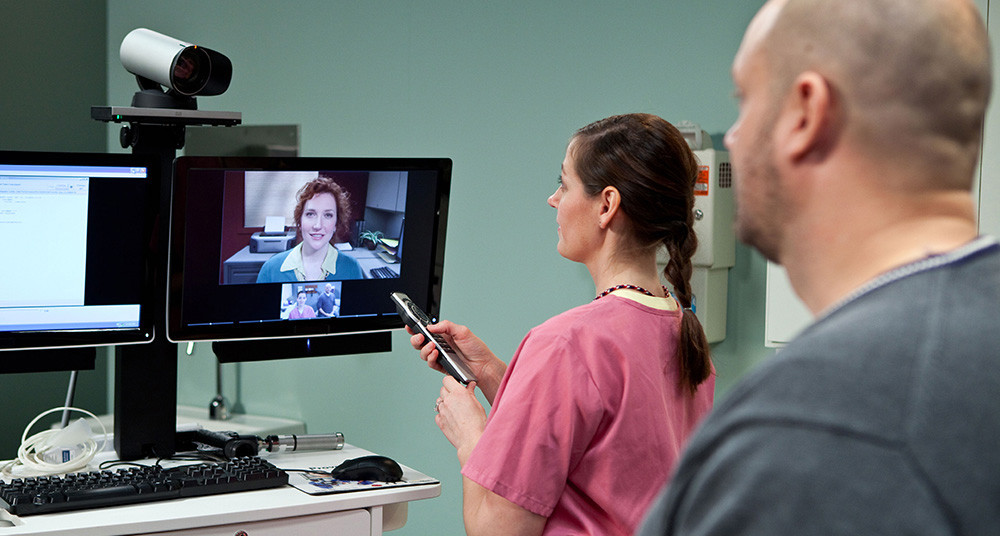
In recent months, the pilot program showed promise for veterans, helping more than 61,182 callers with a 59.4% case resolution rate.
Today, the U.S. Department of Veterans Affairs announced that tele-emergency care (tele-EC) is now available nationwide, a step that increases timely access to virtual emergency care options for veterans enrolled in VA health care. This expansion of care — piloted in recent months — has already shown promise for veterans, helping more than 61,182 callers with a 59.4% case resolution rate (meaning veterans’ needs were resolved without having to travel from their homes to urgent care or an emergency department).
Tele-emergency care is a part of VA Health Connect, a phone service that veterans can call nationwide. Veterans who contact VA Health Connect will speak to a clinical triage nurse, who will connect them to tele-emergency care when clinically appropriate. Tele-EC providers will then evaluate the veteran over the phone or on video and recommend treatment or follow-up, including if in-person care is needed. In life-threatening emergencies, the clinical triage nurse will call 911 and stay on the line until help arrives. It is important to note veterans experiencing a life-threatening emergency should immediately contact 911, versus seeking support via tele-EC.
Veterans enrolled in VA health care can now access tele-EC nationwide by calling VA Health Connect, and through the VA Health Chat app. Veterans can find their local VA Health Connect number by searching for their facility.
“Veterans can now be evaluated for possible emergencies from the comfort of their home,” said VA Under Secretary for Health Shereef Elnahal, M.D. “Sometimes, you’re not sure whether what you’re experiencing is a minor emergency or not — and tele-emergency care can help you resolve those questions. Veterans can get immediate, virtual triage with a VA medical provider who has direct access to their medical records. This avoids having to potentially drive to the nearest emergency department and wait to be evaluated, if appropriate.”
Through VA’s tele-emergency care, veterans now have increased and quicker access to timely emergency care from VA clinicians, helping them get the right care, at the right time, from the right place. While tele-EC does not replace the need for in-person emergency evaluation, for veterans in rural areas or those with mobility and transportation challenges, in-person immediate care can be difficult to access. VA’s tele-EC helps bridge this gap through quick, virtual triage assessments.
VA continues to increase veterans’ access to VA health care through initiatives like tele-EC, access sprints, and by designing and implementing more virtual care options. Since President Biden signed the PACT Act into law, VA is delivering more care to more veterans than ever before. Nearly 740,000 veterans have enrolled in VA health care in the past two years.
Veterans’ trust in VA is at an all-time high, with outpatient health care trust scores reaching 91.8% in the latest VA Trust Report. For the second consecutive year, VA outperformed non-VA hospitals in a major independent, nationwide review of care quality, with the majority of VA facilities receiving 4- and 5-star ratings. At the same time, 79% of VA facilities received 4- or 5-star ratings for patient satisfaction — the ninth consecutive quarter in which VA facilities have outperformed non-VA counterparts in this independent review.
For more information about VA care, visit VA’s health care website. For more information about veteran trust in VA, visit the VA trust website. To enroll in VA care, visit https://www.va.gov/health-care/how-to-apply/.




